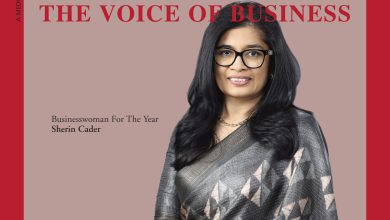COVER STORY
INTRODUCTION
Building resilience through love
Unveiling Sri Lanka’s Most Loved Brands for 2023
Following the financial implosion of the economy in April last year, all Sri Lankans have felt the pain. This in turn has influenced their purchasing habits across multiple categories. All consumer brands are under severe strain, and it is only those that have been able to rapidly adapt to the dramatically changed landscape and retain customers’ love that will survive.
These brands have certain distinct characteristics: they are familiar, and most often tried and tested brands that consumers have trusted – in many instances, for generations.
In addition, they offer the functional benefit of easing the economic burden through price, convenience, being longer-lasting and so on.
But this alone is not sufficient with brands that have succeeded being the ones demonstrating greater consumer empathy by doing things differently.
The top line results of our annual analysis of Sri Lanka’s most loved brands provide some overall trends. They include value for money brands showing a positive upward trend across categories, and consideration for high value products and premium brands dropping.
Meanwhile, in view of the ban on vehicle imports, consideration has declined in this segment – as well as for construction related brands as less people have been building houses during this period of high inflation.
And as household incomes have shrunk, nonessential category scores for the likes of biscuits have fallen.
It would seem that these trends are natural reactions to the economic pressures brought about by the extraordinary circumstances that consumers find themselves in. The strong relationships that many of the brands on our list have built in the past cushion them during such a crisis.
As consumer confidence is shaken, less loved brands tend to drop out of the basket of goods that consumers can afford to purchase. It is also likely that customers are less inclined to experiment and therefore, gaining confidence should be a key endeavour for those that are not in the top three of their respective categories.
Brands that have continued to invest in marketing would be well positioned to build loyalty. Given this scenario, it would seem obvious that brands should explore factors that could be used to build ‘love.’

THE WINNERS Certain categories are clearly much stronger and more competitive than others. These include banking, dairy, quick service restaurants, life insurance, pantry staples and women’s personal care, for example.
The Sri Lankan consumer market is relatively small and our historical findings suggest that there is little room for multiple brands to build sustainable business in each sector.
Categories with two strong brands – such as the biscuits, ice cream, telecommunications and ride hailing segments – enable the two main players to coexist profitably. Accordingly, a third player would be hard-pressed to gain market share and survive over the long term.
There have been few changes to the top 50 in our index, which supports the fact that the most loved are brands consumers turn to in times of crisis. While the brands in the top 10 have traded places, their positions are largely intact.
Both Dettol and Sunlight jointly head the index as the most loved brands this year. They have long registered high scores and often changed spots in the leadership race of Sri Lanka’s most loved brands.
ADAPT THE STRATEGY During difficult times, management is often compelled to abandon all brand investments. However, these are the very times when consumers want to feel reassured.
The methods that loved brands use to keep customers engaged have to radically change in these times of stress and hardship. With consumer aspirations on hold for the time being, they’re having to manage with an ever widening financial budget while striving to provide for the necessary nutritional and health requirements of their families, which is the priority.
In such circumstances, strategies should be led by being more socially responsible through authentic actions. As brands adapt to being true to their core, it highlights the importance of having a well-defined purpose, which can guide their actions during good times and bad.
Such is the power of building endurance to retain brand love.
By working off its tried and tested platform, a brand is more likely to impact loyal consumers and transform them into brand advocates who in turn can be converted to brand evangelists.
This core passionate group of consumers is the vital bedrock to building an enduring brand.
Love takes a long time to build. But once established, the built-up deposits of brand love help weather the storm… and it takes a lot to turn an advocate into a critic.
– Brand Finance

METHODOLOGY
The most loved brands list is compiled through an online survey covering 800 registered panel members in the Colombo and Gampaha Districts being managed and maintained by our research partner Breakthrough Business Intelligence. The research was carried out between November 2022 and January this year.
Respondents to our surveys are from the Colombo and Gampaha Districts as they account for a disproportionately large share of economic activity and consumer consumption in Sri Lanka.
Since we are evaluating the largest brands in the country, unless a brand has a significant presence in these regions, they will not be able to build critical mass. Furthermore, these regions are the trend-setters.
Our focus is on understanding changes in purchasing patterns over time to estimate the future potential of a brand.
Respondents to our surveys are exposed to and provide feedback on individual brands in separate categories. The three brands that emerge at the top of each category are featured in our table and as a matter of interest, we also provide a consolidated table with the 50 most loved brands with the highest scores across all sectors.
ELIGIBILITY FOR LISTING The criteria to be included in the list of brands for research purposes is based on our database and the historical data we have gathered over the last 10 years.
Brand Finance has a master list of brands in the main purchase categories operating in the country. These brands are reviewed annually by our team of analysts for their market presence during the year. This provides us with the categories and brands within them, which have established a strong presence across the country for a sustained period of time.
Since this is a multi-sector research study, the number of brands that represent each category can vary. For example, the banking sector is very large with many brands while the telecommunications industry has far fewer brands.
SCREENING AND SELECTION Respondents in the SEC A and B profiles within the 20-50 age group from Colombo and Gampaha were selected from an online panel of over 20,000 registered members.
They were further screened based on their purchases in a specific category. Only those who claimed to be aware of a brand rated it.
RESEARCH METHOD Respondents from the online panel rated brands on the level of trust associated with them and likelihood of considering a brand for purchase on a 10 point scale.
A total of 327 brands across 51 categories were taken into account in the research and each one was rated by 60 people (30 each from Colombo and Gampaha). In total, 800 respondents participated in the survey, and each person rated between 15 and 20 brands – depending on the size of the categories – through a structured online questionnaire.
Respondents rated brands based on individual sectors by benchmarking one brand against others within that sector. The scores were recorded on a 10 point scale on their level of trust association for individual brands and likelihood of considering a brand for purchase.
While a brand’s performance should be reviewed within the context of its sector, for the general interest of readers, we have also integrated the 50 brands that have the highest scores across all categories and featured them in a separate index.
As set out in our methodology, it should be noted that all the brands listed in the 50 loved index are not evaluated against each other if they are from different sectors.





